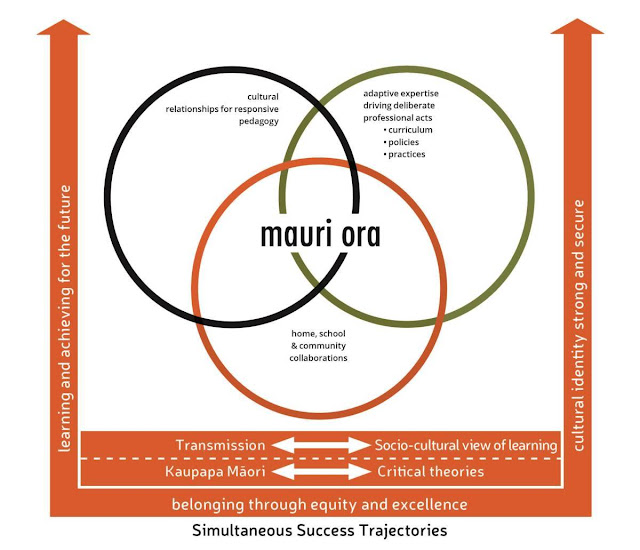Tehei Mauri Ora!
As part of ongoing personal development at my school, I have been exploring the introduction of Te Ao Māori (the Māori world) into my educational practices. In Te Ao Māori, the development of the learning environment is about nurturing mauri ora. The concept of mauri is complex, but in simple terms can be considered a vitality of life. There are multiple types of mauri and like a spider's web each type has many threads and I shall only touch on a few here, as I am still learning. Mauri can be considered a metaphysical aspect of Te Ao Māori and could have useful practical application to our teaching practice.
When the mauri of your students is at its peak, the students are flourishing in your classroom – with alert and inquiring minds and mutually beneficial relationships between students and teachers and between students themselves, this is known as mauri ora. This view of the learning environment is part of the mauri ora model, as explained by Sir Mason Durie.
The model illustrates the relationship between mauri ora and mauri noho. Mauri noho is considered to be the opposite of mauri ora, meaning that the vitality of the students are struggling, and is associated with a loss of motivation, lack of focus and strained relationships. The idea is to move the mauri of the learning environment from mauri noho to mauri ora.
Traditional didactic teaching continues to be the dominant pedagogy in most secondary schools. In their book Culture Speaks, Bishop & Berryman state that students said they understood why they needed this approach, but they also wanted to have some input in their learning and share and discuss their ideas with others. The takes a more socio-cultural view of learning (Vygotsky, 1978).
The mauri of the students can be transformed by using this socio-cultural view of learning ranging from more personal engagement between teachers and students, being responsive to the student’s prior knowledge and experience and build new learning from these beginnings (Bruner 1996) and affirming their identity. This approach creates contexts for mauri ohooho, where a student’s mauri is nurtured, strengthened and able to flourish (Berryman, M., Eley, E., Ford, T., & Egan, M. (2016).
In this approach to learning, direct instructional practices, although still important, can be enhanced through developing relationships to engage with whānau and community to create more authentic learning experiences for our students, so they can reach their full potential, to have mauri ora. This could involve more real world projects involving the community or incorporating whānau and the community in general in lesson design. This will require changes in both curriculum design and individual and school teaching practices.
So, in conclusion. the concept of mauri can serve us all well in our role as teachers, an understanding of its basics may help our students on a journey to discover their potential. There is no doubt that mauri is integral to Te Ao Māori and that it has applications in the classroom. Although I have presented a very simplified and short explanation of some aspects of mauri, hopefully, it will stimulate some thought and maybe you might be able to link your teaching practice to the concept.




Comments